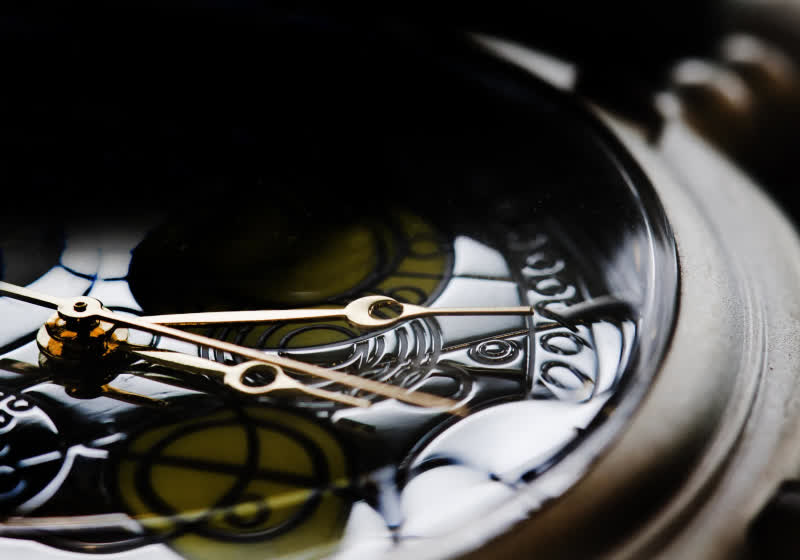It’s been more than two decades since the Vera C. Rubin Observatory was first conceived in a “back-of-the-napkin” sketch. With construction on this huge telescope finally nearing completion, Rubin scientists unveiled its dazzling first images at a livestreamed event in Washington D.C. on Monday, June 23.
Perched atop a mountain in the Chilean Andes, the Rubin Observatory boasts the largest digital camera ever built. The telescope, overseen by the U.S. National Science Foundation (NSF) and the Department of Energy (DOE), recently used this car-sized, 3.2-gigapixel camera to conduct just over 10 hours of test observations. In this short period, Rubin observed millions of galaxies and Milky Way stars as well as 2,104 never-before-seen asteroids, according to an NSF release. Rubin scientists unveiled a “sneak-peak” of some of these images just after midnight on Monday, but those were just the tip of the iceberg.
During today’s event, Rubin scientists engaged digital warp-drive, using a program called Skyviewer to zoom deep into the observatory’s images and reveal their finest details in striking clarity. This platform is freely available to all, allowing both researchers and non-experts to explore the cosmos like never before. The ultra-high-definition images showcase Rubin’s ability to capture swirling galaxies, colorful nebulae, and billions of stars in unprecedented detail.
“We hope you see these images as beautiful. They’re also a little different than what you’re used to seeing—actually, significantly different,” said Steve Ritz, a professor of physics at the University of California Santa Cruz and project scientist for Rubin construction. In most astronomical pictures, the spaces between objects are inky black voids. “But that’s not what you saw here. What you saw was that inky black space is actually full of stuff,” Ritz said.
“It’s full of galaxies—it’s full of all kinds of interesting things. And it’s because of Rubin’s unique combination of capabilities that we’re able to bring that all out.”
 This small section of the Rubin observatory’s total view of the Virgo cluster shows two prominent spiral galaxies (lower right), three merging galaxies (upper right), several groups of distant galaxies, many stars in the Milky Way galaxy, and more © NSF-DOE Vera C. Rubin Observatory
This small section of the Rubin observatory’s total view of the Virgo cluster shows two prominent spiral galaxies (lower right), three merging galaxies (upper right), several groups of distant galaxies, many stars in the Milky Way galaxy, and more © NSF-DOE Vera C. Rubin ObservatoryThe observatory’s first wave of discoveries includes supernovae and distant galaxies that can help astronomers study the expansion of the universe. By observing these objects, Rubin may even help solve the Hubble tension—a discrepancy between different measurements of the universe’s current expansion rate, known as the Hubble constant.
Rubin also discovered seven new near-Earth asteroids. They pose no danger to our planet, but finding them demonstrates how the observatory can rapidly identify previously unknown asteroids and help astronomers assess potential threats to Earth. In total, all other ground and space-based observatories discover roughly 20,000 new asteroids per year, but Rubin scientists estimate that this single observatory will discover millions within the first two years of its Legacy Survey of Space and Time (LSST).
This decade-long survey of the night sky will produce an ultrawide, ultra-high-definition time-lapse record of the universe. The data should help scientists uncover the true natures of dark matter and dark energy, catalog the solar system, explore the changing sky, and understand the structure and functioning of our Milky Way galaxy.
Rubin will observe the cosmos on an automated schedule using its 27.6-foot (8.4-meter) Simonyi Survey telescope—whose unique three-mirror design includes the largest convex mirror ever made. Each 30-second exposure will cover an area about 45 times the size of the full Moon. Then, the enormous LSST camera will capture wide-field images and stitch them together to create a complete view of the southern sky every three nights.
Dedicated computer facilities will process the data in real time. If these facilities detect any changes in the night sky, they will issue global alerts within minutes, allowing other telescopes to pivot to the area of interest. The observatory’s findings will then be compiled into a massive archive that will vastly increase the amount of data available to scientists.
Researchers led by astronomer Meg Schwamb at Queen’s University Belfast recently estimated that Rubin could triple the number of known near-Earth objects (NEOs) from about 38,000 to 127,000, detect 10 times more trans-Neptunian objects than currently cataloged, and provide colorful, detailed observations of more than 5 million main-belt asteroids—up from roughly 1.4 million.
Thus, the wealth of data Rubin produced in this first test is only the beginning. Already, the observatory has compiled a “very complex” dataset, but Clare Higgs—the astronomer on Rubin’s education and public outreach team—has been working hard to make the data accessible to all. In addition to exploring Rubin’s images through Skyviewer, people will eventually be able to experience sky survey data through sound. Data sonification, the practice of assigning audible representations to information and processes, offers a powerful alternative to visualizations, according to the observatory’s website.
Higgs is also excited about getting Rubin data into classrooms. The observatory’s education program will provide online astronomy investigations based on real Rubin data that are designed for students of all ages, from middle schoolers to college students.
“One of the things I’m really excited about,” Higgs said, “is the fact that we’re about to see a generation of students who can see Rubin data in their classrooms in high school, and then perhaps choose to study that in university, and then go on to maybe make the next amazing discovery that will be in that treasure trove of data.”









 English (US) ·
English (US) ·